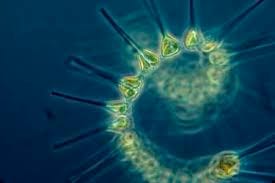Ocean Microbes are Iron Deficient, Which Could Contribute to Climate Change
Surprising findings from a study of microbial processes in the ocean’s “Twilight Zone” may affect the transfer and storage of carbon from the surface to the ocean floor
Breaking The Ice:
Last week, researchers from the University of South Florida released a significant study revealing that the mesopelagic zone of the ocean (200-500 meters deep) is severely deficient in iron. The study demonstrated that iron limitation in this zone constrains bacterial activity, which is essential for nutrient cycling and carbon sequestration. The discovery was part of GEOTRACES, an international research initiative aimed at understanding climate-driven changes in ocean biogeochemistry.
(Editor’s Note: If you don’t understand how carbon sequestration works in the ocean, don’t worry! AccumulationZone explains this in “The Thaw” below.)
Quick Melt:
This study suggests that bacterial iron deficiency is widespread in the oceanic “twilight zone,” potentially inhibiting the ability of the ocean to sequester atmospheric carbon dioxide (CO2). This limitation could reduce the efficiency of the biological carbon pump, affecting the amount of carbon that sinks to the deep ocean. Consequently, less carbon is being stored long-term, which could weaken the ocean's role in regulating atmospheric CO2 levels and mitigating climate change.
The Thaw:
How Do Oceans Capture Carbon? AccumulationZone Explains.
The biological carbon pump (BCP) is a fundamental oceanic process that helps regulate Earth's climate by sequestering CO2 into the deep ocean. This natural mechanism plays a vital role in the global carbon cycle and climate regulation.
The process begins at the ocean's surface, where atmospheric carbon dioxide dissolves into seawater. Here, microscopic marine plants called phytoplankton use this dissolved CO2, along with sunlight and nutrients, to perform photosynthesis. As phytoplankton grow and multiply, they're consumed by small marine animals called zooplankton. This starts a chain reaction in the ocean's food chain, with larger organisms feeding on smaller ones. Throughout this process, carbon moves through the ecosystem in various forms.
However, not all of this organic matter is consumed. When marine organisms die or produce waste, they begin to sink. This falling material, often referred to as "marine snow," carries carbon from the surface waters down into the deeper layers of the ocean. As this organic matter sinks, much of it is decomposed by bacteria in a process known as the microbial loop. These microorganisms break down the organic matter, releasing some of the carbon back into the water. However, a portion of this carbon continues to sink into the deep ocean, where it can remain sequestered for hundreds or even thousands of years.
Oceanic Carbon Sequestration is Vital to Climate Stabilization
The sequestration of CO2 by the BCP helps to moderate the greenhouse effect, which is responsible for global warming. The Intergovernmental Panel on Climate Change (IPCC) estimates that, for every trillion tons of CO2 emitted, global temperatures could rise by approximately 0.45°C. Therefore, the removal of CO2 by the BCP is vital in helping to stabilize the climate. In fact, it's estimated that the BCP sequesters about 10 gigatons of carbon dioxide every year, which is approximately the same as the annual emissions from 2 billion passenger vehicles.
The efficiency of the BCP can be affected by various factors, including ocean temperature and acidity. Warmer surface waters lead to stronger stratification, reducing the mixing of nutrients from deeper waters to the surface. This decreases the productivity of phytoplankton, which are crucial for the BCP as they absorb CO2 during photosynthesis. A reduction in phytoplankton productivity leads to less carbon being sequestered in the deep ocean, as fewer organic particles are produced to sink and transport carbon to the ocean depths. Additionally, ocean acidification can modify the BCP. Oceanic dissolved carbon reacts with water to form carbonic acid, reducing the availability of carbonate ions which are essential for shelled aquatic organisms to form their calcium carbonate shells. The BCP relies on these calcifying organisms to transport carbon to the deep ocean, so when their abilities are compromised, less carbon is sequestered in the deep ocean.
Final Thoughts
As our climate changes, understanding and monitoring this crucial process becomes increasingly important for predicting future climate scenarios and developing strategies to mitigate climate change. Additionally, this research highlights the need for innovative approaches to address nutrient limitations in the ocean, which could help enhance the BCP's effectiveness and improve the ocean's role in long-term carbon sequestration.



